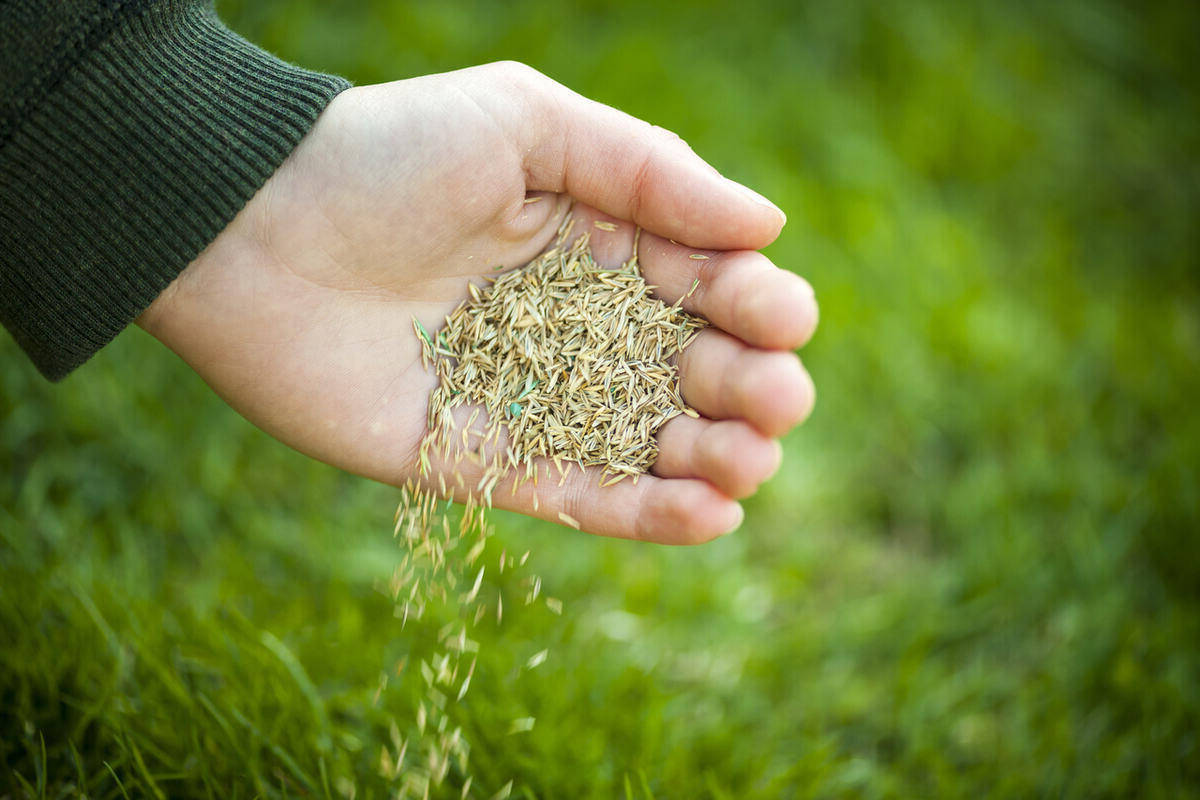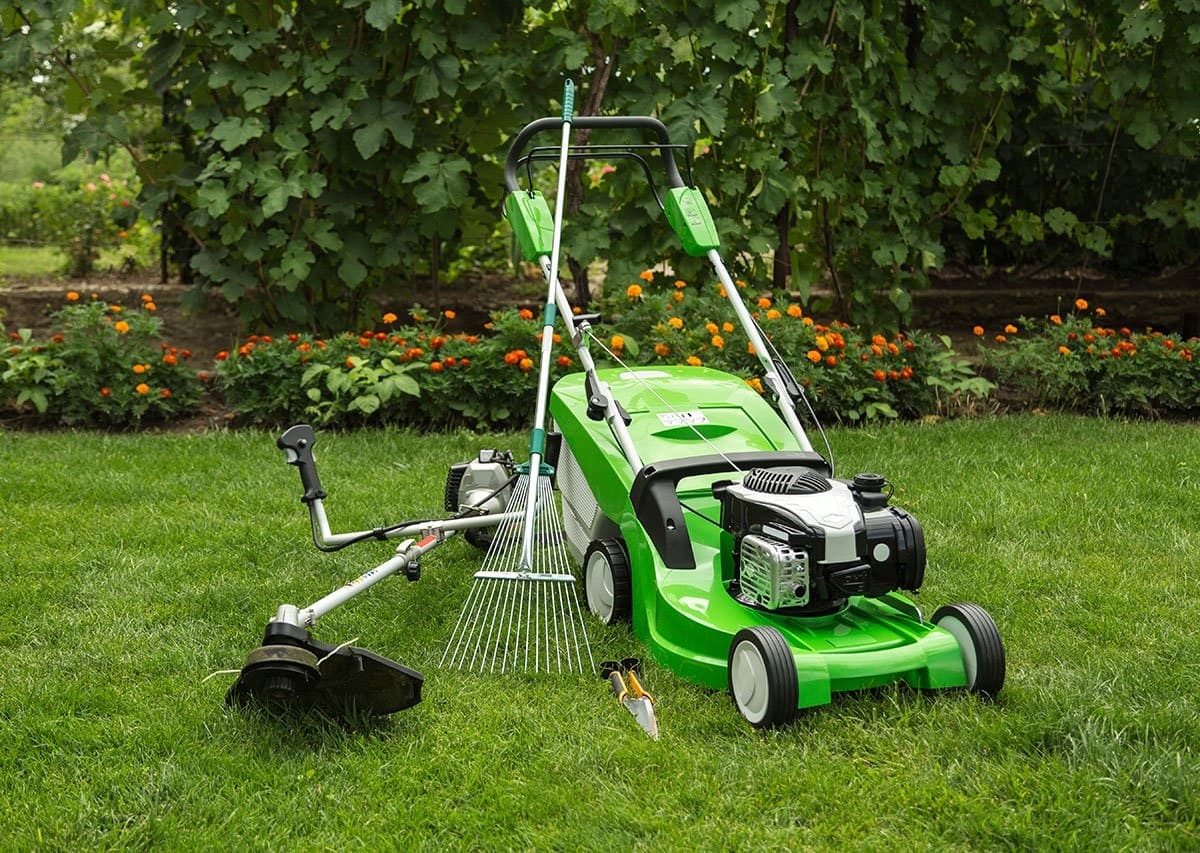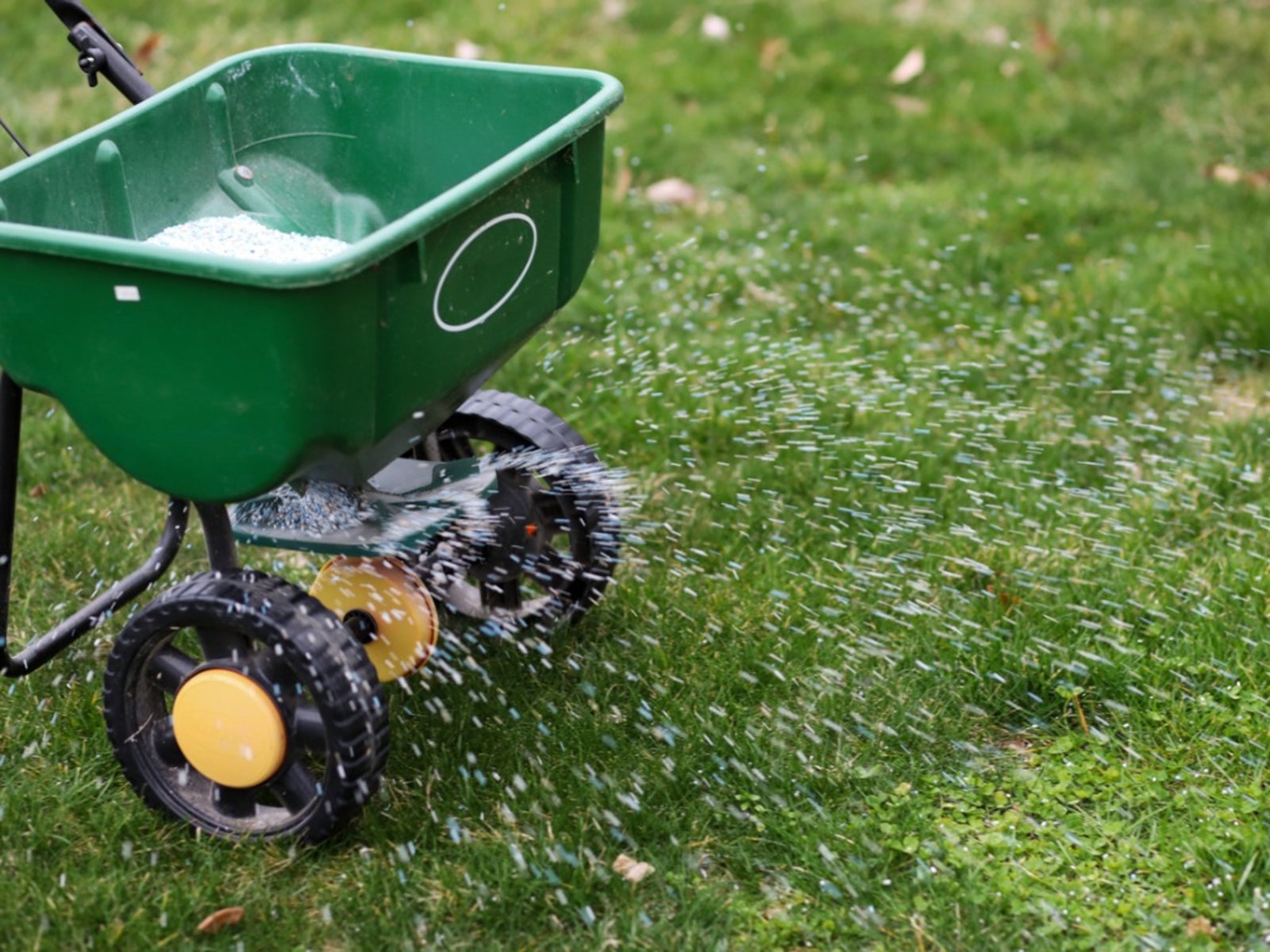Home>Garden Essentials>What Is A Good Lawn Care Schedule


Garden Essentials
What Is A Good Lawn Care Schedule
Modified: September 2, 2024
Find out what is a good lawn care schedule for your garden. Learn key tips and tricks to maintain a healthy and beautiful lawn all year round.
(Many of the links in this article redirect to a specific reviewed product. Your purchase of these products through affiliate links helps to generate commission for Storables.com, at no extra cost. Learn more)
Introduction
Having a beautiful and well-maintained lawn is the dream of every garden enthusiast. However, achieving that lush green carpet requires more than just occasional mowing and watering. It requires a well-planned and consistent lawn care schedule. A good lawn care schedule takes into consideration various factors such as the type of grass, climate, soil conditions, and the time you can dedicate to maintaining your lawn.
An effective lawn care schedule is essential to keep your lawn healthy, vibrant, and resistant to weeds, diseases, and pests. It ensures that you provide the right care at the right time, maximizing the health and appearance of your lawn.
In this article, we will discuss the importance of a lawn care schedule and explore the factors to consider when creating one. We will also delve into the weekly, monthly, and seasonal tasks that should be a part of your lawn care routine. So, let’s dive right in!
Key Takeaways:
- Consistent lawn care routines ensure healthy, vibrant, and weed-resistant lawns. By following a schedule, you can achieve the picturesque lawn you’ve always desired.
- Tailoring your lawn care routine to factors like grass type, climate, and soil conditions ensures a thriving and visually appealing lawn.
Importance of a Lawn Care Schedule
A lawn care schedule is the backbone of maintaining a healthy and vibrant lawn. Without a proper schedule, it can be easy to neglect crucial tasks or perform them at improper times, causing damage to your lawn. Here are a few reasons why a lawn care schedule is so important:
- Consistency: A consistent lawn care routine ensures that your lawn receives the care it needs on a regular basis. By following a schedule, you can establish a routine that includes frequent mowing, watering, fertilizing, and other necessary tasks. Consistency helps your lawn thrive and prevents the accumulation of neglected problems.
- Preventive Care: A lawn care schedule allows you to address issues before they become major problems. Regular maintenance tasks can catch issues like weeds, pests, and diseases in their early stages, allowing you to take action and prevent them from spreading and causing irreparable damage. Timely prevention saves you time, money, and effort in the long run.
- Optimal Timing: Different lawn care tasks have specific timeframes in which they should be performed. For example, fertilizing during the active growing season ensures that the grass receives the essential nutrients it needs to thrive. By adhering to a schedule, you can perform tasks at the most optimal times, maximizing their effectiveness.
- Improved Appearance: Adhering to a lawn care schedule helps to maintain a consistently attractive and well-groomed lawn. Regular mowing, trimming, and edging keep the grass at an ideal height, while proper watering and fertilizing promote a vibrant and healthy appearance. By following a schedule, you can achieve the picturesque lawn you’ve always desired.
- Long-term Health: A well-maintained lawn is more resistant to diseases, pests, and environmental stressors. By following a lawn care schedule, you provide consistent care and promote the overall health and resilience of your lawn. This, in turn, reduces the risk of costly repairs or replacement in the future.
A lawn care schedule is not only essential for the wellbeing and longevity of your lawn, but it also brings peace of mind and allows you to enjoy your outdoor space to its fullest potential. By establishing a consistent routine and addressing issues in a timely manner, you can create a thriving and visually appealing lawn that becomes the envy of your neighborhood.
Factors to Consider for a Lawn Care Schedule
Creating an effective lawn care schedule requires considering various factors that can affect the health and maintenance needs of your lawn. By taking these factors into account, you can tailor your lawn care routine to meet the specific needs of your lawn. Here are some key factors to consider:
- Grass Type: Different types of grass have different growth patterns, maintenance requirements, and tolerance to various climatic conditions. Whether you have warm-season grasses like Bermuda or cool-season grasses like Kentucky bluegrass, understanding the characteristics of your grass type helps you determine the appropriate care schedule.
- Climate: The climate in your region plays a significant role in determining the frequency and type of lawn care tasks. Consider factors such as temperature, precipitation, humidity, and seasonal changes. Adjust your watering, fertilizing, and other maintenance tasks accordingly to ensure optimal performance of your lawn in your specific climate.
- Soil Conditions: The type and condition of your soil influence the nutrient requirements, drainage, and overall health of your lawn. Conduct a soil test to determine the pH level, nutrient deficiencies or excesses, and soil composition. This information helps you provide the necessary amendments, such as fertilizers and soil conditioners, at the right time and in the right quantities.
- Sun Exposure: The amount of sunlight your lawn receives is crucial in determining its growth and maintenance needs. Lawns in full sun have different watering and mowing requirements compared to those in shaded areas. Take note of the sun exposure and adjust your care schedule accordingly.
- Usage and Traffic: How you use your lawn, such as frequent foot traffic or hosting outdoor events, affects its maintenance needs. High-traffic areas may require more frequent watering, aeration, and overseeding to repair any damage. Consider your usage patterns and adjust your schedule to support the resilience of your lawn.
By carefully considering these factors, you can create a customized lawn care schedule that addresses the specific needs of your lawn. Keep in mind that your lawn’s requirements may change over time, so it’s important to regularly assess and adjust your schedule as needed. With a well-tailored schedule, you can ensure that your lawn thrives and remains healthy throughout the year.
Weekly Lawn Care Tasks
A weekly lawn care routine is essential for maintaining the health and appearance of your lawn. By performing regular tasks on a weekly basis, you can keep your grass looking its best and address any emerging issues. Here are some important weekly lawn care tasks to include in your schedule:
- Mowing: Regular mowing helps to maintain an even and well-manicured lawn. Set your lawnmower blades at the appropriate height for your grass type and aim to remove only one-third of the grass blade with each mowing. This promotes healthy growth and prevents stressing the grass. Remember to vary your mowing pattern each time to avoid compaction and encourage upright growth.
- Weeding: Weed control is crucial to maintaining a pristine lawn. Take the time each week to remove any weeds that have emerged, ensuring you remove them by the root to prevent regrowth. Consider using organic weed control methods or targeted herbicides to effectively combat persistent weeds.
- Watering: Monitor the moisture levels of your lawn and adjust your watering schedule accordingly. Aim to provide your lawn with around 1 inch of water per week, either through rainfall or irrigation. Water deeply and infrequently to encourage deep root growth and prevent surface evaporation. Water early in the morning to allow for proper absorption and prevent disease development.
- Inspecting for Pests and Diseases: Regularly inspect your lawn for signs of pests and diseases. Look for yellowing or discolored patches, chewed grass blades, or any unusual activity. If you spot any problems, take appropriate action immediately. Consider using natural or organic pest control methods to minimize the impact on beneficial insects and the environment.
- Clearing Debris: Remove any debris, such as fallen leaves or branches, from your lawn. This helps to promote airflow and prevent disease and pest infestations. Use a rake or leaf blower to keep your lawn clear and tidy.
By incorporating these weekly tasks into your lawn care schedule, you can maintain a healthy and beautiful lawn. Remember that consistency and attention to detail are key. Regularly assessing and addressing the needs of your lawn will ensure that it remains in excellent condition throughout the growing season.
A good lawn care schedule includes regular mowing, watering deeply but infrequently, fertilizing in the spring and fall, and aerating and dethatching as needed.
Monthly Lawn Care Tasks
In addition to regular weekly maintenance, there are certain monthly tasks that should be included in your lawn care schedule. These tasks help to address specific needs and ensure the long-term health and vitality of your lawn. Here are some essential monthly lawn care tasks to consider:
- Fertilizing: Apply a high-quality lawn fertilizer to provide essential nutrients to your grass. The specific fertilizer application schedule will depend on your grass type and region, but generally, it is recommended to fertilize once a month during the active growing season. Follow the manufacturer’s instructions for application rates and methods.
- Aerating: Aerating your lawn allows for improved air circulation, water penetration, and nutrient absorption. Use a mechanical aerator or specialized tools to create small holes in the soil. This helps to relieve compaction and encourages healthier root growth. Aim to aerate once a year, or more frequently if your lawn has high foot traffic or heavy clay soil.
- Overseeding: Over time, lawns can develop thinning areas or bare patches. By overseeding, you can introduce new grass seed to promote thicker and healthier turf. Choose a seed mix appropriate for your grass type and follow proper seeding practices. Ensure the newly seeded areas are kept moist until the grass establishes itself.
- Inspecting and Maintaining Irrigation System: Regularly inspect your irrigation system to ensure it is functioning properly. Check for leaks, clogged sprinkler heads, and correct coverage. Adjust the system as needed to ensure even watering and prevent water waste. This is particularly important during hot summer months when adequate watering is essential.
- Detaching: Thatch buildup can prevent water and nutrients from reaching the soil, impacting the health of your lawn. Conduct detaching as needed to remove excess thatch. Use a detaching rake or power detacher to remove the layer of dead grass and debris. Follow up with proper watering and aeration to encourage healthy growth.
By including these monthly tasks in your lawn care schedule, you can provide your lawn with the necessary care and attention it requires. Remember to adjust the timing of these tasks based on your local climate and grass type. Regular maintenance and proactive measures contribute to a lush and thriving lawn that you can enjoy year-round.
Seasonal Lawn Care Tasks
Adjusting your lawn care routine based on the season is crucial to maintain a healthy and thriving lawn throughout the year. Different seasons bring different challenges and requirements for your lawn. Here are some important seasonal lawn care tasks to include in your schedule:
Spring:
- Spring is a time of rejuvenation for your lawn. Begin by raking or dethatching to remove any dead grass and debris that has accumulated during the winter.
- Apply a slow-release fertilizer to provide essential nutrients and promote healthy growth as the grass starts to wake up from its dormant state.
- Consider a pre-emergent herbicide application to prevent the growth of weeds in the coming months.
- Inspect for any signs of pest or disease damage and take appropriate action if necessary.
Summer:
- Maintain a consistent watering routine to ensure your lawn receives about an inch of water per week, either through rainfall or irrigation.
- Adjust your mowing height to accommodate for the heat. Taller grass provides shade to the soil and helps retain moisture.
- Continue regular inspections for pests and diseases and treat accordingly.
- Be cautious with fertilizer applications in hot weather, as excessive nitrogen can burn the grass. Consider using natural alternatives or slow-release fertilizers.
Fall:
- Rake and remove fallen leaves to prevent suffocation and matting of the grass.
- Aerate and overseed to promote healthy growth and fill in any bare patches.
- Fertilize with a high phosphorus mix to encourage strong root development and prepare your lawn for the winter months.
- Continue monitoring for pests and diseases, and treat as needed.
Winter:
- While lawn growth slows down in winter, it’s still important to keep your lawn free from debris and leaves to prevent disease and pest problems.
- Consider winterizing your irrigation system to prevent freezing and damage.
- Avoid walking on frozen grass, as it can cause damage to the turf.
- Inspect for any signs of winter diseases such as snow mold and treat if necessary.
By incorporating these seasonal tasks into your lawn care schedule, you can provide your lawn with the appropriate care it needs at different times of the year. Adapting your efforts to the changing seasons will help to ensure the long-term health and resilience of your lawn.
Additional Considerations for a Good Lawn Care Schedule
While creating a lawn care schedule based on the factors mentioned earlier is crucial, there are a few additional considerations that can further enhance the effectiveness of your schedule. These considerations focus on promoting sustainability, minimizing environmental impact, and optimizing the health of your lawn. Here are some important things to keep in mind:
- Water Conservation: Consider implementing water-saving techniques to conserve water while still keeping your lawn healthy. This includes watering during cooler parts of the day to reduce evaporation, using drip irrigation or smart sprinkler systems to ensure targeted watering, and adjusting watering frequency based on weather conditions and the needs of your lawn.
- Organic Lawn Care: Choose organic or natural alternatives whenever possible for lawn care products. This includes using organic fertilizers, natural pest control methods, and environmentally-friendly weed control options. Organic practices promote soil health, minimize chemical runoff, and create a safer environment for pets, children, and beneficial insects.
- Proper Mowing Techniques: Pay attention to proper mowing techniques to avoid stressing or damaging the grass. Set your mower blades at the appropriate height for your grass type, and avoid cutting the grass too short, as this can lead to shallow root growth and increased susceptibility to weeds and diseases. Additionally, keep your mower blades sharp to ensure clean cuts and minimize stress on the grass.
- Soil Testing and Amendments: Conduct regular soil testing to determine the nutrient levels, pH balance, and overall health of your soil. Based on the test results, implement appropriate soil amendments to create an optimal growing environment for your lawn. This may include adding lime to adjust pH levels or adding organic matter to improve soil structure and nutrient retention.
- Responsible Pest Control: Use integrated pest management (IPM) techniques to address pest issues, taking a targeted and environmentally-friendly approach. IPM involves monitoring and identifying pests, using cultural and biological control methods, and only resorting to chemical controls as a last resort. This approach minimizes the use of pesticides and promotes a balanced ecosystem in your lawn.
By incorporating these additional considerations into your lawn care schedule, you can create a more sustainable and environmentally-friendly approach to maintaining your lawn. It ensures that you are not only caring for your lawn’s immediate needs but also supporting its long-term health and resilience.
Conclusion
A well-planned and consistent lawn care schedule is the key to achieving a beautiful and healthy lawn. By considering factors such as grass type, climate, soil conditions, and sun exposure, you can tailor your schedule to meet the specific needs of your lawn.
Regularly performing tasks such as mowing, watering, fertilizing, and inspecting for pests and diseases ensures that your lawn remains in optimal condition throughout the year. Adapting your routine to the changing seasons further enhances the health and resilience of your lawn.
In addition, considering water conservation, organic lawn care practices, proper mowing techniques, soil testing and amendments, and responsible pest control further promotes sustainability and minimizes environmental impact. These considerations create a balanced and eco-friendly approach to lawn care.
A good lawn care schedule not only maintains the appearance of your lawn but also contributes to its long-term health and vitality. By providing consistent and appropriate care, you can enjoy a lush and vibrant lawn that becomes the envy of your neighborhood.
So, take the time to create a comprehensive lawn care schedule that works for you and your lawn. Invest in its maintenance, follow best practices, and enjoy the rewards of a beautiful and excellent outdoor space for years to come.
Frequently Asked Questions about What Is A Good Lawn Care Schedule
Was this page helpful?
At Storables.com, we guarantee accurate and reliable information. Our content, validated by Expert Board Contributors, is crafted following stringent Editorial Policies. We're committed to providing you with well-researched, expert-backed insights for all your informational needs.















0 thoughts on “What Is A Good Lawn Care Schedule”